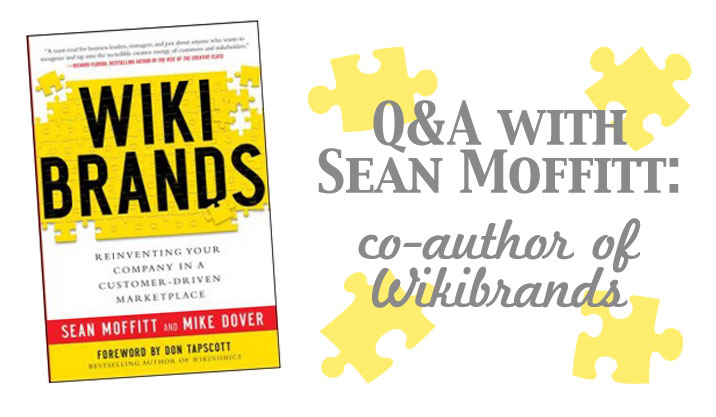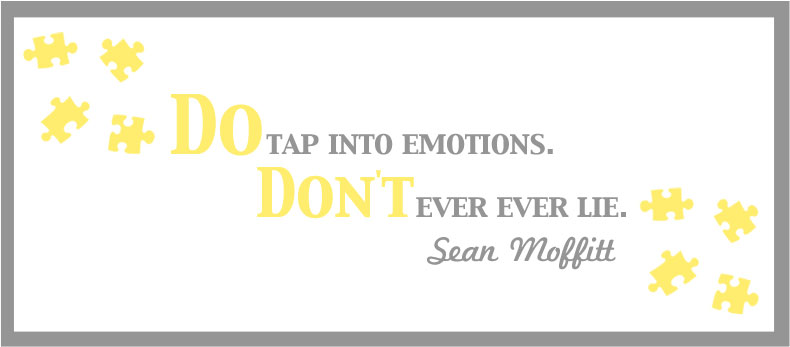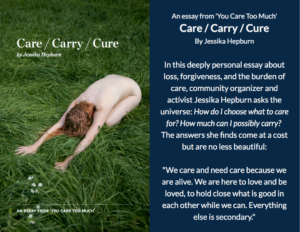by Debra Norton of Vintage Paper Parade
As a small business, I use social media on a daily basis. Using tools like Twitter and Facebook, I’ve been able to connect with individuals and audiences I might not have been able to so easily.
If you are like me, you probably wonder how to maximize your time using social media. If you are a new social media user you may be wondering where to start and what the benefits could be for your business.
Sean Moffitt is the co-author of Wikibrands: Reinventing your Company in a Customer-Driven Marketplace. He is also President of Agent Wildfire, a leading social influence, word-of-mouth, and customer engagement company.
Sean is an expert in word-of-mouth marketing and I chatted with him (via email) about using social media for small business.
1. First of all, congratulations Sean on your new book Wikibrands. It is exciting to chat with you about marketing our small business brands. Can you tell me what inspired you to write this book?
Equal amounts of passion for the customer and the culture of digital media, plus the fact that most business isn’t tapping the new media universe’s potential and most advice on the subject from the “gurus”, although provocative, lacks discipline and rigour and therefore is limited on how they can benefit organizations, of any size. Plus, we were encouraged to write it by some of our esteemed colleagues including Wikinomics author Don Tapscott.
2. As small brands, many of us may already engage customers via social networking. How can we build on this and optimize/streamline our time when we are trying to juggle so many other business priorities?
It’s a great question, last time I checked there are still only 168 hours in the week (disappointingly!). Choosing your battles and knowing what you want to get out of the medium and which platforms is a start. Making your mission to develop some kind of relationship with your top 100-150 influencers/fans – if you do a great job here, they will do the heavy lifting of spreading your message.
On a real tactical level, I love using a social media dashboard called HootSuite – it makes my time twice as efficient by connecting fans, topics and posts all in one place. One great feature is that it allows you to schedule posts in the future, so when you do have time you can batch it up and spread your tweets out.
Finally, the bar is quite high for being noticed and talked about on the web. Average and even good stuff gets overlooked. Being awesome in a different way is an elusive, yet magical elixir for the social web. Ask two questions – what would truly be an unexpected surprise for my prospects and customers? And when faced with an opportunity, pursue the line of thought “where could I take this/ how could I take this further and extend and exaggerate its impact?
3. How can we use social media to stand out and reach our intended audience? Best connect with influencers and be relevant? What is the best social media tool to start with?
The table stakes are having a great looking profile, profile page, blog and/or website. It has to look up to the level of you intended success. Find a decent designer that understands the aesthetic of your audience. It’s amazing what off the shelf website/blogs can look like through WordPress template makers like StudioPress or Woo Themes, at a fraction of the price of custom websites.
Beyond that it’s important to understand why people join things in social spaces. It makes them look good (i.e. fame, ego, VIP treatment), it makes them feel good (i.e. good cause, like minded people, likable/human interest), and they can get something tangible (i.e. free sample, customized products, advance access). Addressing these motivations, particularly amongst your most passionate or potential audience, will go a long way. Don’t over think it though, try many small experiments to see what works.
4. What are some of the reasons why social media followings may not grow?
Limitations on social media growth could include all of the following: using the wrong tone for the social space you’re in, lack of content, lack of relevance, too much preaching vs. asking questions/posing challenges/creating forums for discussion, no incentives for involvement, lack of multimedia (e.g. video, photos), absence of a good repeatable story.
In one of our surveys, the biggest sin stated was the inability to listen. How can you possibly tap into the social zeitgeist if you don’t have your antennae up for what’s relevant and important to your community right now.
5. What are the big do’s/don’ts of social media marketing?
Do post anywhere that your audience could reside, never mind people, search engines love social savvy content, frequently uploaded from a number of different areas.
Do tap into emotions – you may think you’re just purchasing a mop or a hand cream, but more than half of purchases we make our emotional – so really try to harness that tug and allure.
Do be the most different or the first at something. It’s so tough to be the best at something, never mind prove it. Try to be different than anybody else at some facet or feature of your product or service. It may mean foregoing some feature for the sake of being focused now.
Don’t ever ever lie – and if you ever find yourself in a hard spot, apologize quickly versus defending your position. The web embraces a fast apologist and penalizes the obstinate resistor.
Don’t be so controlling – try to be open to other’s input and occasionally let your mess show, people love humility and an openness to integrate what they know with what you know.
Don’t pursue everything – you will end up drowning – pick your networks, pick your target people, move on quickly, experiment fast and recognize if you are spending 40 hours every week on Facebook, something is wrong. Stick to a schedule and some time allocation that makes sense for you and lean on others to slide down your learning curve quickly.
6. What are the advantages to being a small online business when engaging in social media?
Social media makes small business appear bigger than it really us. In three hours, you can be a global company in five pretty significant platforms – Facebook, Twitter, YouTube, Flickr and WordPress.
The other big advantages versus your much bigger and well-funded adversaries is that you can act more human, more consistently, more quickly with more affection for your opinion. There isn’t a bank investment, IPO or venture capital fund that will erase that advantage, use it.
7. How is Wikibrands relevant to a small business? How can Wikibrands help a small business develop and/or enhance its social media strategy?
When we wrote Wikibrands we were size-agnostic – the principles for good practice on the social web are as true for big corporate giants as they are for garage entrepreneurs, with only some caveats.
Chapters 5 through 14 in our book are the real “meat and potatoes” process of being successful in a Wikibrand world. Starting with Culture, than our FLIRT model (focus, language, incentives, rules, tools) followed by four aspects for keeping success alive (community, measurement, planning and internalizing benefits). And it’s not personal opinion either, but filtered insights on how the best companies and startups put on their social pants in the morning.
Give it a read and we’ll guarantee you’ll learn something important. Our conversation continues at www.wiki-brands.com, @wikibrands on Twitter and seven other social networks. Join our tribe please.
When not speaking about Wikibrands, Sean Moffitt also leads a startup Agent Wildfire (www.agentwildfire.com) and considers himself, based on a faint resemblance, “social media’s answer to Matt Damon”. Visit his profile on Facebook or Twitter @seanmoffitt and let him know your thoughts.





